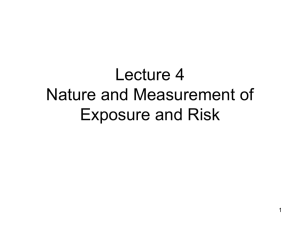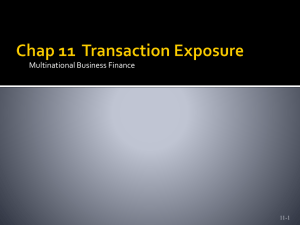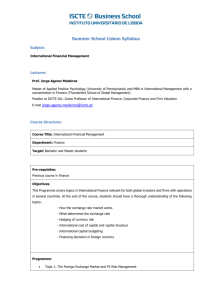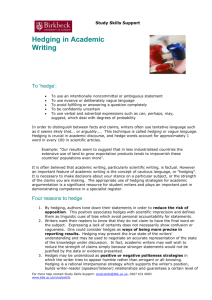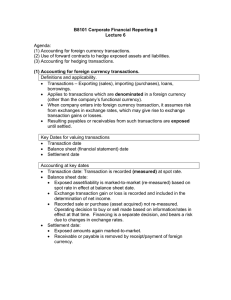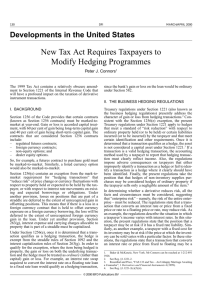Transaction Exposure: Foreign Exchange Risk Management
advertisement
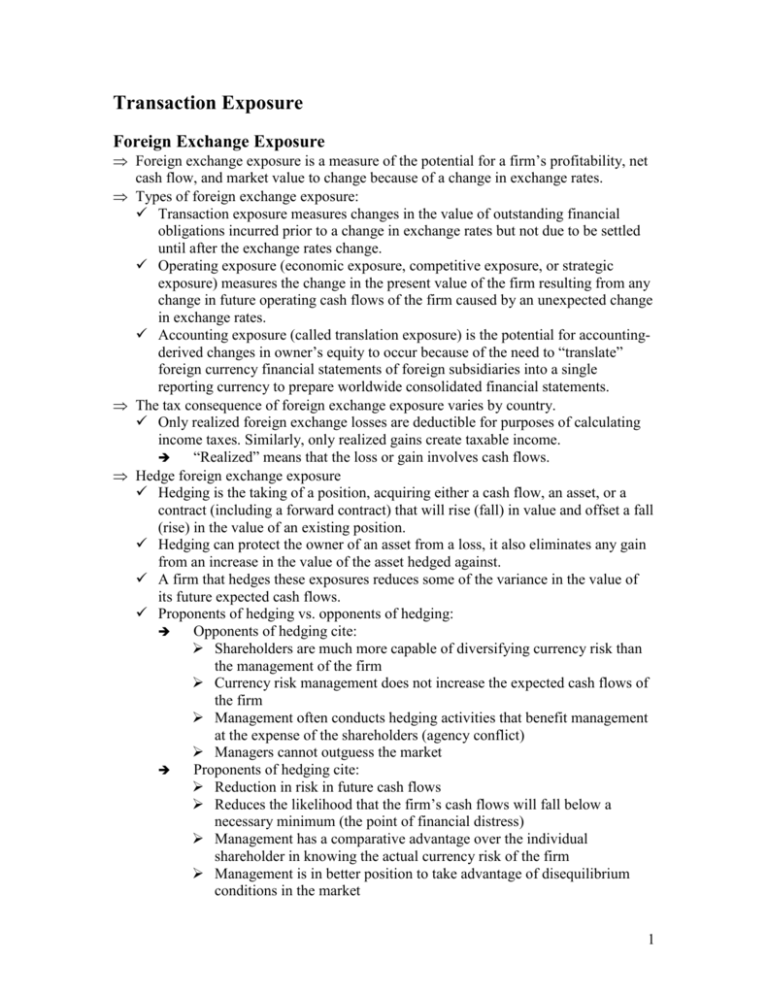
Transaction Exposure Foreign Exchange Exposure Foreign exchange exposure is a measure of the potential for a firm’s profitability, net cash flow, and market value to change because of a change in exchange rates. Types of foreign exchange exposure: Transaction exposure measures changes in the value of outstanding financial obligations incurred prior to a change in exchange rates but not due to be settled until after the exchange rates change. Operating exposure (economic exposure, competitive exposure, or strategic exposure) measures the change in the present value of the firm resulting from any change in future operating cash flows of the firm caused by an unexpected change in exchange rates. Accounting exposure (called translation exposure) is the potential for accountingderived changes in owner’s equity to occur because of the need to “translate” foreign currency financial statements of foreign subsidiaries into a single reporting currency to prepare worldwide consolidated financial statements. The tax consequence of foreign exchange exposure varies by country. Only realized foreign exchange losses are deductible for purposes of calculating income taxes. Similarly, only realized gains create taxable income. “Realized” means that the loss or gain involves cash flows. Hedge foreign exchange exposure Hedging is the taking of a position, acquiring either a cash flow, an asset, or a contract (including a forward contract) that will rise (fall) in value and offset a fall (rise) in the value of an existing position. Hedging can protect the owner of an asset from a loss, it also eliminates any gain from an increase in the value of the asset hedged against. A firm that hedges these exposures reduces some of the variance in the value of its future expected cash flows. Proponents of hedging vs. opponents of hedging: Opponents of hedging cite: Shareholders are much more capable of diversifying currency risk than the management of the firm Currency risk management does not increase the expected cash flows of the firm Management often conducts hedging activities that benefit management at the expense of the shareholders (agency conflict) Managers cannot outguess the market Proponents of hedging cite: Reduction in risk in future cash flows Reduces the likelihood that the firm’s cash flows will fall below a necessary minimum (the point of financial distress) Management has a comparative advantage over the individual shareholder in knowing the actual currency risk of the firm Management is in better position to take advantage of disequilibrium conditions in the market 1 Measurement of Transaction Exposure Transaction exposure measures gains or losses that arise from the settlement of existing financial obligations whose terms are stated in a foreign currency. The most common example of transaction exposure arises when a firm has a receivable or payable denominated in a foreign currency. For example, if a US company agrees to purchase 5,000 TVs from a Japanese manufacturer for 60,000,000 yen when the exchange rate is $0.00935/yen, then US dollar of cost of the purchase will be $561,000, if the exchange rate remains unchanged. However, if the exchange rate changes to $0.00950/yen before the US firm pays for the TVs, the US dollar cost will rise to $570,000. consequently, the US firm will suffer a transaction loss of $9,000. Foreign exchange transaction exposure can be managed by contractual, operating, and financial hedges. The main contractual hedges employ the forward, money, futures, and options markets. Operating and financial hedges employ the use of risk-sharing agreements, leads and lags in payment terms, swaps, and other strategies. Trident’s Transaction Exposure Maria Gonzalez, CFO of Trident, has just concluded a sale to Regency, a British firm, for £1,000,000. The sale is made in March for settlement due in three months time, June – Assumptions • Spot rate is $1.7640/£ • 3 month forward rate is $1.7540/£ • Trident’s cost of capital is 12.0% • UK 3 month borrowing rate is 10.0% p.a. • UK 3 month investing rate is 8.0% p.a. • US 3 month borrowing rate is 8.0% p.a. • US 3 month investing rate is 6.0% p.a. • June put option in OTC market for £1,000,000; strike price $1.75; 1.5% premium • Trident’s foreign exchange advisory service forecasts future spot rate in 3 months to be $1.7600/£ • Trident operates on thin margins and Maria wants to secure the most amount of US dollars; her budget rate (lowest acceptable amount) is $1.7000/£ With reference to Trident’s Transaction Exposure, the CFO, Maria Gonzalez, has four alternatives: Remain unhedged Hedge in the forward market Hedge in the money market Hedge in the options market These choices apply to an account receivable and/or an account payable 2

